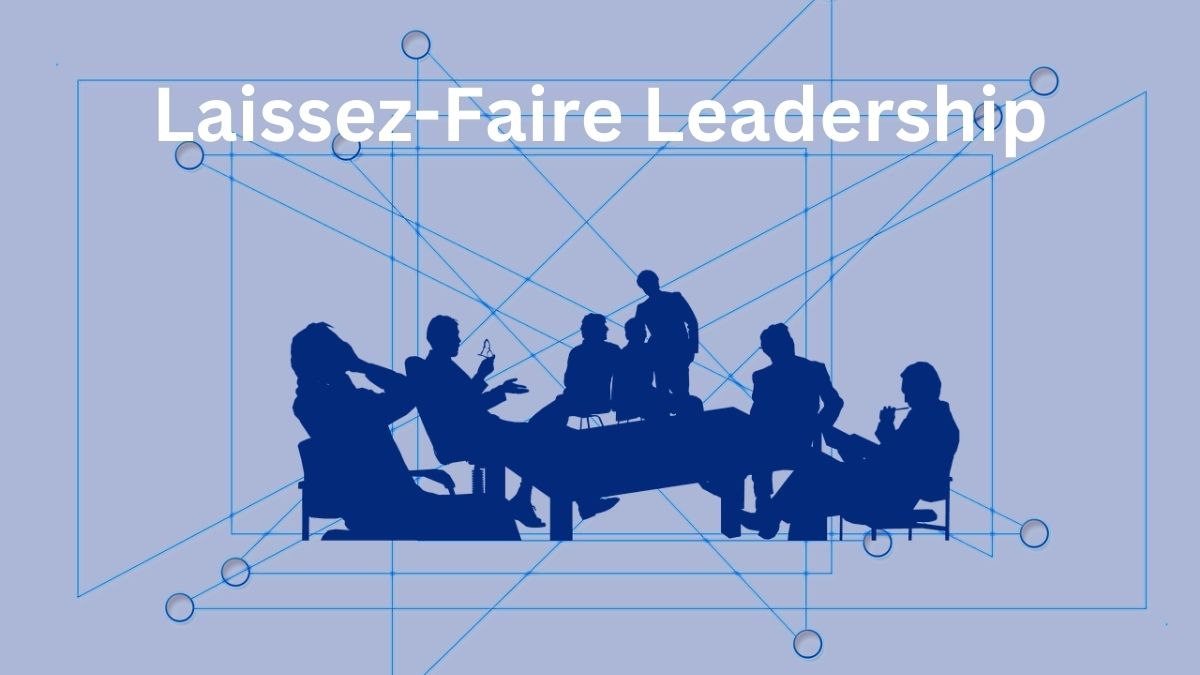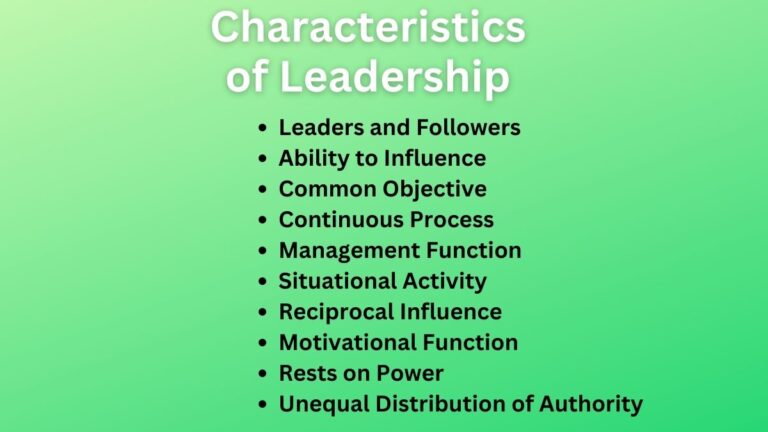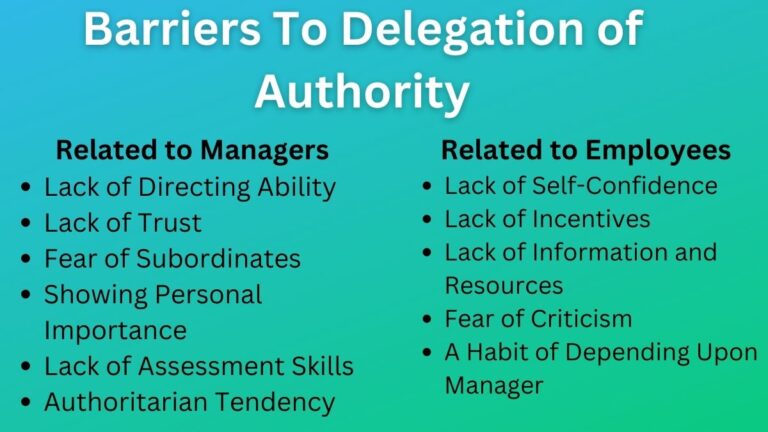What is Laissez Faire-Leadership? Definition, Features, Advantages, and Disadvantages
What is Laissez Faire Leadership?
Laissez-faire leadership is a leadership style in which the leader grants total authority and responsibility to the group and group members have the freedom to work things out themselves the way they see fit and the best they can. It is also called delegative leadership and Free Rein leadership.
In this leadership style, followers or subordinates have the full right to make decisions on their own and choose the way they can do their best. Usually, laissez-faire leaders do not like to interfere with their subordinates in their decision-making process. However, they know when to interfere and when not and are ready to give assistance whenever subordinates ask.
Laissez-faire leaders believe in their followers. They have the belief that building a strong team grants them the necessary authority, and staying out of the way i.e. letting the team do independently. Here, teams are self-directed, self-controlled, and self-motivated.
More simply, the French meaning of “laissez-faire” includes “let it be” or “leave it alone”. As such, in a laissez-faire leadership style, subordinates are left free to complete their assignment in their own way without any strict rules and procedures to follow.
Two-way as well as horizontal communication is followed in this leadership style. This style is suitable in organizations where subordinates are highly trained & professional, creative, highly educated, and have sufficient knowledge of decision-making. Here, subordinates require a minimum level of guidance and control. Leaders play only the facilitator’s role in this style.
Characteristics of Laissez-Faire Leadership Style
The following are the main characteristics/features of the laissez-faire leadership style.
Related: Autocratic Leadership Style
- It is a hands-off approach to leadership.
- Leaders only coordinate and facilitate resources and team efforts.
- A high level of trust by leaders in their team members is seen.
- Subordinates are self-directed and guided. Leaders do not direct them.
- Decisions such as personal goals, performance standards, working processes, etc. are left to the employees.
- Every employee has the right to use their own intellectual freedom.
- Leaders know when to step in and lead during a crisis.
- Ultimate accountability remains with the leader.
Advantages of Laissez-Faire Leadership
Like other leadership styles, this delegative style also has various benefits. When your team has highly skilled and experienced people, the laissez-faire leadership style is the best option, as they are competent enough to handle the given jobs on their own. The other benefits can be mentioned as:
Job Satisfaction
Related: Styles of Leadership
Since this leadership style follows a hands-off approach, employees are free to make decisions. They can make the decisions they want and do their duties in the way they want to. Their ideas and ways of doing things are valued. They feel respected, and as such, their job satisfaction increases.
Career Advancement
Most of the employees are in search of a career option in their organization. They always look for an opportunity to show the organization what they are capable of. As employees are given the freedom to make decisions, performance evaluations, control, and exercise new roles within their organization, they experience the chance for career advancement.
Employees Become Creative and Have the Initiative
Free-rein leadership also makes employees more creative and encourages them to take initiative. In this organization, employees are already skilled and highly educated and are interested in exercising the new roles and responsibilities.
By doing so, they even become more creative in their field and do not hesitate to take any initiative action that they think is beneficial for the organization.
Relief To Top Leader
Since the top leader delegates all of his authority and responsibilities to his subordinates, he is free from his workload. He has enough time to address the strategic issues of the firm. However, he must have to supervise the performance of his subordinates and be accountable for activities performed under his leadership.
Suitability
The laissez-faire style of leadership is suitable in organizations where highly skilled, educated, guided, intellectual, motivated, and self-directed employees are in the majority.
Opportunities Realization
An instant decision is necessary to grab the opportunities generated in the dynamic environment. Since employees are given the freedom to make decisions at the level of work they do, they are also close to the real field or market of the business.
They have more knowledge of happening in the market, and as such, they can make necessary decisions whenever opportunities come in the market, and the realization of those opportunities becomes more possible.
Read Also: Coaching Leadership
Disadvantages of Laissez-Faire Leadership
Many argue that laissez-faire leadership does not bring desirable productivity and performance since employees are given too much autonomy. Despite many advantages, it also has some drawbacks.
When employees are unskilled and new in the corporate field, this leadership style is not fit for them. In this situation, if this leadership is applied, such employees can not complete tasks as expected, and job performance will become poor. The following are possible cons of the laissez-faire leadership style:
Suitability
This leadership style is best suited when employees are highly skilled and experienced. But, when employees of an organization have the majority of unskilled, semi-skilled, and inexperienced it is not an appropriate option. In this situation, such unskilled employees would prefer other leadership styles such as autocratic leadership.
Potential of Conflict
Although employees are self-guided and directed. During the job, employees have to work collectively in teams. There is a chance that team members’ interests and attitudes will clash with one another. When two or more group members’ interest clash conflict arises and it hampers the performance of the overall group.
Related: Causes of Workplace Conflict
Potential of Indiscipline
There may be a serious problem of discipline because of the lack of proper direction and guidance from the leader. Employees may direct for their personal benefits rather than organizational benefits i.e. objectives.
Role Ambiguity
There can be a period when workers are unsure of their responsibilities, their boss, or to whom they should report. A laissez-faire leader might not disclose all the information required for teams to get started on a new project. Employees may become confused if they are unaware of their role in this, for this reason.
When To Use Laissez-Faire Leadership Style?
The following are the common situations where laissez-faire leadership can be suitable.
- When employees are well-trained and experienced and are ready to assume responsibility.
- When organizational goals have been communicated well and are acceptable to all subordinates.
- When the leader is interested in delegating the full decision-making authority.
- When the leaders are sure their followers are competent to complete the task as per their expectations.
Read Next: Democratic Leadership Style
Sajan Kushmi is a content writer with more than 4 years of experience. He holds BIM Degree. He write on the topics related to Management, Marketing, and Entrepreneurship.






